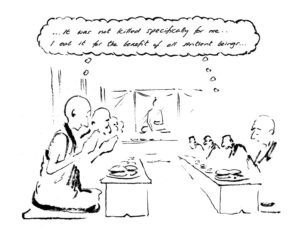Definition of the Week (52): Existent
☞ Purbu Chock:
Definition: Being the object of prime cognition
In Buddhism the dividing line between something that exists and something that is only projected or imagined, is whether it is the object of prime cognition or not.
His Holiness the Dalai Lama:
The only antidote against the afflictions is to cut through the false appearances projected by mistaken conception and understand the reality of the object.
☞ Gyaltsab Je:
One is mistaken with regards to the truth of suffering by grasping at purity, happiness, permanence and self. Understanding the four aspects of the truth of suffering, which are impermanence, suffering, empty and selfless, counteracts this.
Take the subject suffering of suffering
it is impermanent – because it is generated adventitiously
it is suffering – because it is powered by karma and afflictions
it is empty – because there is no separate controlling self
it is empty – because it is not established in the nature of an independent self.
To exist it has to be the object of prime cognition. E.g., while the fiction of Harry Potter exists, not even one atom Harry Potter does exist.
The permanence of our aggregates, the happiness of samsara we always project, and the self that supposedly posseses these aggregates or enjoys the supposed happinesses of samsara are like Harry Potter – not the object of prime cognition.


